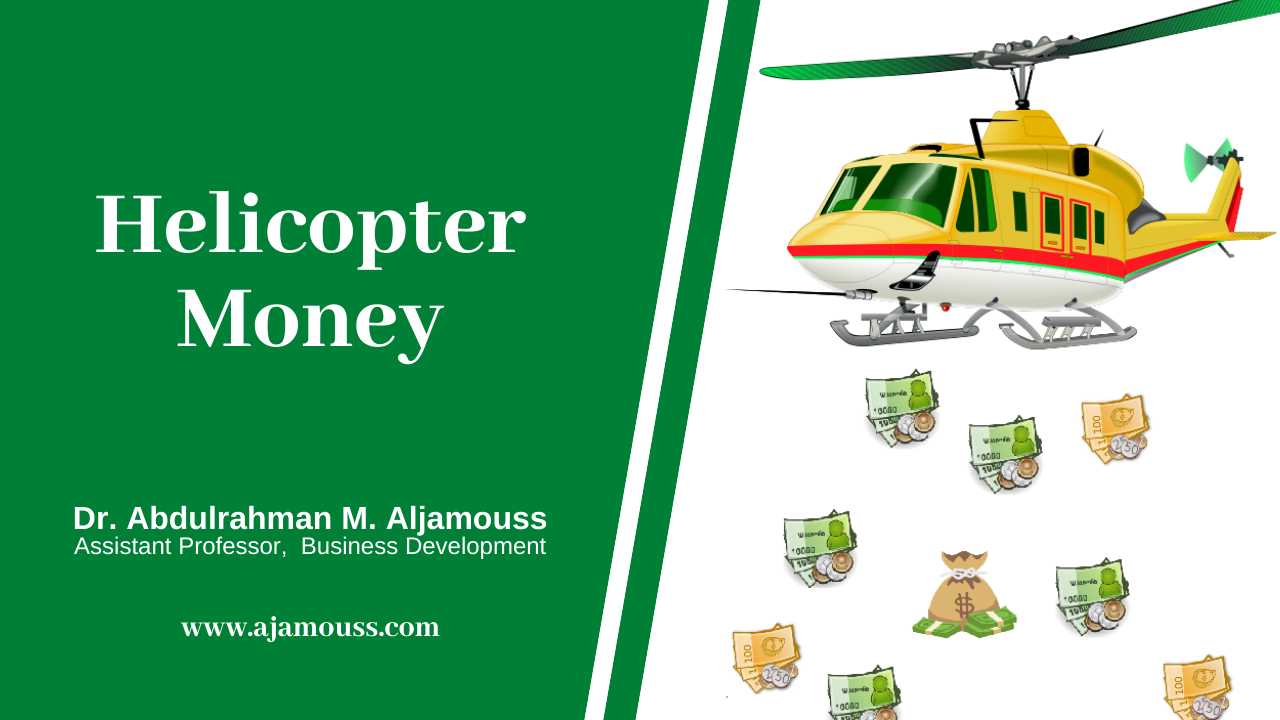Helicopter Money
What is helicopter money?
Helicopter money is the term used for a large sum of new money that is printed and distributed among the public, to stimulate the economy during a recession or when interest rates fall to zero. It is also referred to as a helicopter drop, in reference to a helicopter scattering supplies from the sky.

Helicopter money vs quantitative easing
Helicopter money is an unconventional alternative to quantitative easing, but both aim to boost consumer spending and increase inflation. While helicopter money increases monetary supply by distributing large amounts of currency to the public, quantitative easing increases supply by purchasing government or other financial securities to spark economic growth.
Examples of helicopter money
If a country faces slow or no growth, it could consider a helicopter drop. For example, in 2016, Japan considered using helicopter money to assist with the country’s slowing growth.
Financial markets showed concerned with the decision, as participants feared hyperinflation and currency devaluation. So, the Bank of Japan (BoJ) opted for an alternative method to increase monetary supply. This included different partnerships and purchases such as government bonds, infrastructure outlays and payments to lower-income earners.
